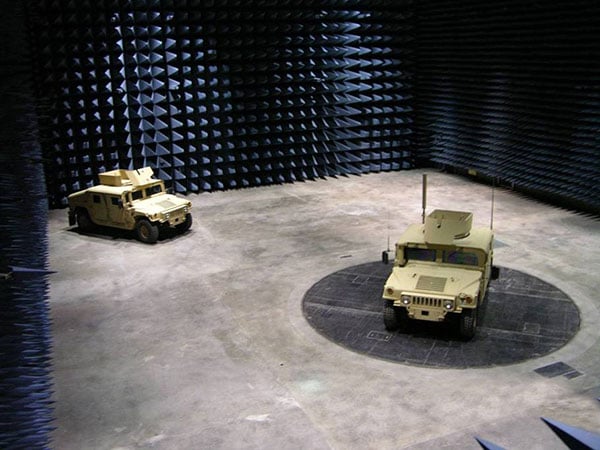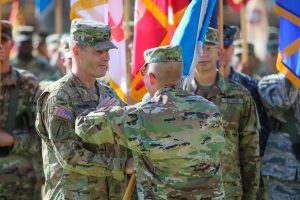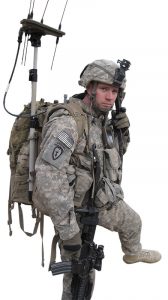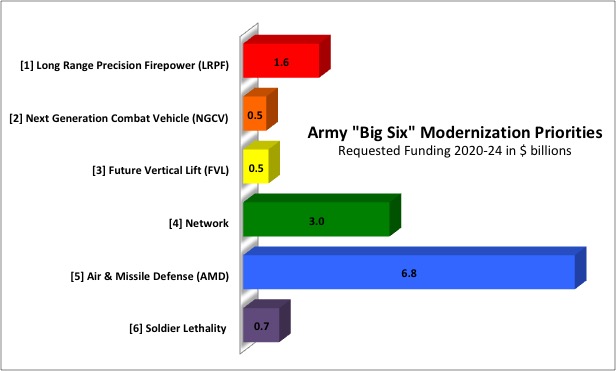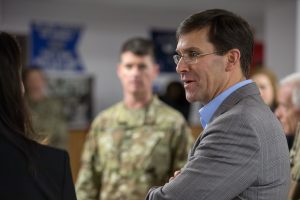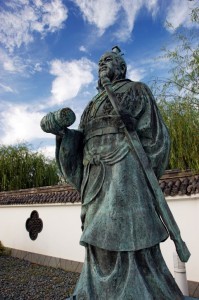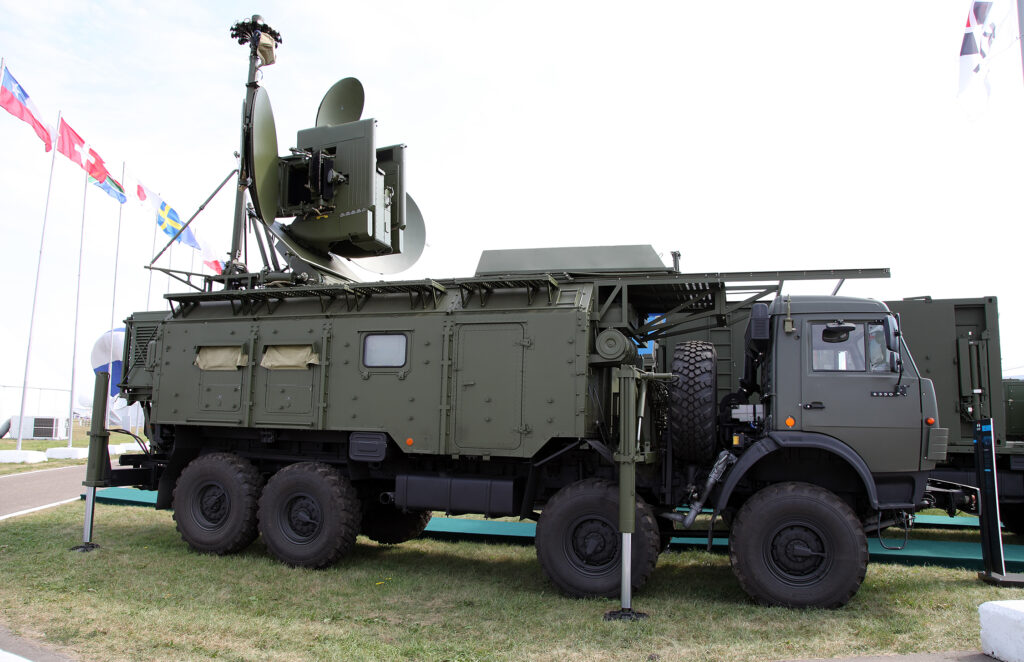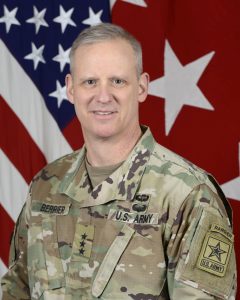Army Wrestles With SIGINT vs. EW
Posted on
CAPITOL HILL: Can the Army unite its rival tribes to retake the high-tech high ground of modern warfare, the electromagnetic spectrum? Those are the stakes in the service’s ongoing internal struggles over doctrine, organization, and an obscure but critical program known as TLIS, the Terrestrial Layer Intelligence System.
Army leaders see TLIS as a powerful synergy between Signals Intelligence (SIGINT), which eavesdrops on and locates enemy transmissions, and Electronic Warfare (EW), which jams those same transmissions and can be used for cyber warfare. But TLIS, as the “intelligence” in its name implies, began as a pure SIGINT system, before it absorbed the former Multi-Function Electronic Warfare (MFEW) program, and there’s always the possible it might regress. At least some electronic warriors hear worrying rumors that the more powerful SIGINT branch wants to save money on TLIS by cutting back on its jamming capabilities, leaving it as a passive sensor rather than an active weapon.
This internal budget battle in the Army could cede the actual battlefield to high-powered Russian and Chinese jammers, electronic warfare advocates fear, with the same lethal consequences for US troops that Ukrainian forces have suffered since 2014.
“The intel people will finally be able to get rid of EW, again, by taking it over, again, and crushing it,” said Col. Jeffrey Church, who until his retirement last year was the most senior Electronic Warfare Officer (EWO) in the Army: There are no EW generals, in stark contrast to SIGINT and cyber. Church was also the last EWO to run the electronic warfare division on the Army’s Pentagon staff: His immediate successor was an engineer — an expert on bridges and minefields, not electrons. Both the staff division and the EWO specialty have since been folded into Army cyber.
“Next,” Church predicted in a bitter post on LinkedIn, “they will cancel the intel portions of MFEW they insisted be written into the EW requirements (i.e. when MFEW was folded into TLIS) and thereby kill the MFEW program.”
“I don’t think your article will affect anything for Army EW,” a weary Church told me. “The only thing that will is when a bunch of our soldiers get killed. Then the Army will act shocked by it and be compelled to bring EW into the force with real gear, real operators, real training and real EW leadership.”
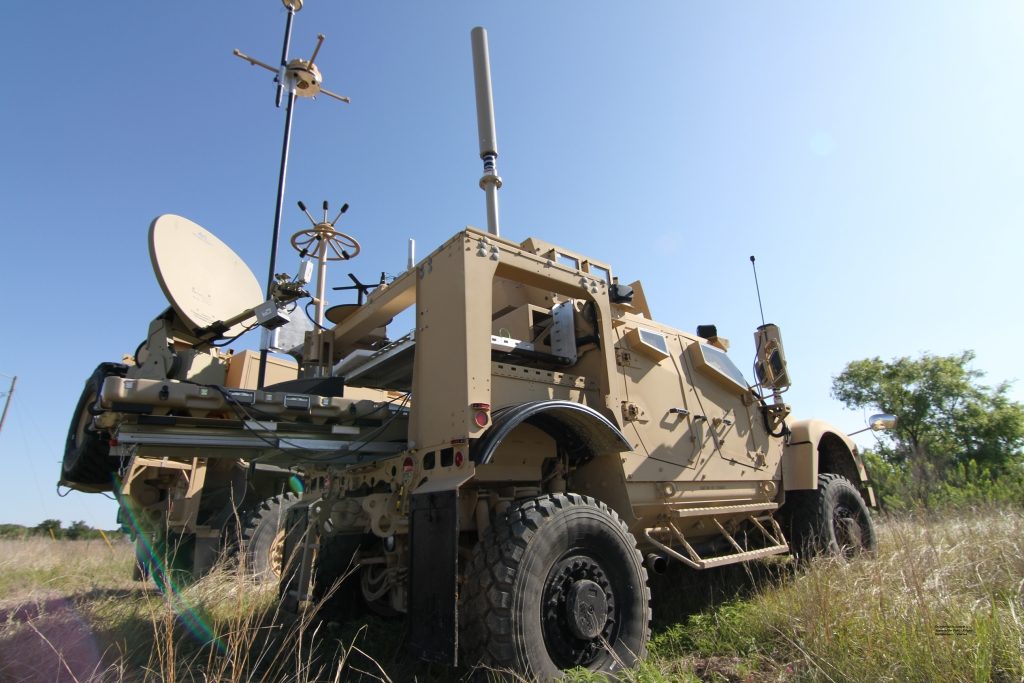
TLIS, the Terrestrial Layer Intelligence System, began as a replacement for the Army’s Prophet Signals Intelligence (SIGINT) system, shown here.
Synergy or Tension?
From drones to foot troops, radio to radar, networks to GPS, everything in a 21st century military has to send and receive signals through the electromagnetic spectrum — which means everything can be detected, targeted, and disrupted. Russia and China have invested massively in electronic warfare since the end of the Cold War while the US disbanded most EW.
Today, while the Navy and Air Force have high-cost jamming aircraft — the EA-18G Growler and EC-130H Compass Call respectively — they’re too rare, expensive, and over-powered to support small units on the ground. But the US Army’s own arsenal consists almost entirely of short-range jammers that fit in backpacks or on Humvees, most of them designed to disable radio detonators for roadside bombs. Meanwhile Russia and China have fleets of heavy trucks packed with high-power EW gear that can scramble US signals hundreds of miles away.
The Army’s original solution to this problem was called Multi-Function Electronic Warfare (MFEW), a common family of sensors and jammers meant to go on trucks, drones and manned aircraft — eventually. But the service decided to fold MFEW into the land-based TLIS and an as-yet-unnamed airborne counterpart instead.
“We are specifically looking at putting SIGINT, EW and cyber on the same platform, both on the ground and in the air,” Maj. Gen. Robert Walters told a July 18 forum organized by the Association of Old Crows, an EW professional group. As commander of the Army’s intelligence center at Fort Huachuca, Ariz., Walters is the Army’s lead “proponent” for TLIS requirements, with the cyber center at Fort Gordon, Ga. in a significant supporting role.

Russian Krasukha-2 electronic warfare system with dish deployed. The system was reportedly used in Syria.
There’s a natural synergy here, Walters said. SIGINT finds the enemy signals and analyzes them, then cyber and electronic warfare can target the weak links in the enemy network. While he didn’t say so out loud, that’s how it’s done by the current masters of the art, the Russians, whose SIGINT and EW officers often sit side by side in the same vehicle so they can quickly coordinate devastating electromagnetic maneuvers, as in Ukraine.
But there’s also a tension between the two sides. Intelligence naturally wants to keep listening to the enemy signals to find out more, whereas cyber/EW warriors want to shut them down or use them to feed cyber weapons into. Now, you can try to shut down only the enemy’s most secure networks so they have to use the ones SIGINT can easily crack. That’s what the Russians did against the Ukrainians, forcing them off their military radios onto personal cellphones — but it’s not easy to pull off.
Second, when EW turns on its jammers, their powerful signal doesn’t just disrupt enemy transmissions: It also provides a big target for enemy missiles and artillery radars to home in on. At best, that means the combined SIGINT/EW unit has to relocate frequently, disrupting listening operations. At worst, it means the combined unit blows up in one shot.
(You can reduce the risk to your troops by putting the jammers on drones or ground robots operated from a distance by remote control, but that creates a new problem: The enemy can detect, decode and jam your communications with the robots).
So how well will the Army balance these tensions? Right now, said one well-connected electronic warfare expert, the intelligence branch is in the driver’s seat, and “once again intel has defaulted back to SIGINT, which disappoints me…..It’s not looking too good.”
This attitude may be overly pessimistic. But there’s little cause for optimism in Army’s unhappy history of internecine intramural rivalries and cancelled procurement programs.
Is Big Six Missing One?
The current Army Chief of Staff, Gen. Mark Milley, is trying to make a break with the service’s dysfunctional past. He has named six modernization priorities, each with its own Cross Functional Team (CFT), led by a general who can pull in people from across the bureaucracy and put them in one room until they thrash out how to get things done. Those CTFs, in turn, will play a leading role in the new Army Futures Command being stood up in Austin.
But electronic warfare has no clear home in this new structure. Of the six priorities — 1) long-range artillery, 2) armored vehicles, 3) aircraft, 4) networks, 5) air & missile defense, and 6) soldier equipment, in that order — the closest fit is with Priority No. 4, the network. That covers all the computerized communication and data systems the Army uses to transmit orders and intelligence: Lose all those and you’re back to carrier pigeons. So, understandably, the emphasis of the network Cross Functional Team is on defending the US network from jamming and hacking, not on attacking enemy networks with our own jammers and hackers.
A spin-off CFT on Precision Navigation & Timing has a similar defensive focus: How can US forces keep track of where everything is and when it has to happen if the enemy disrupts GPS? For that matter, the entire cyber center at Fort Gordon, despite having responsibility for electronic warfare, evolved when the old Signal Corps school took on a growing role in not just setting up communications networks but defending them. It’s only recently taken on an offensive role, and primarily in cyberspace rather than electronic warfare.
So all these leading Army organizations have the same focus on defense. Their job is to keep the network working under attack. But defense is not enough on its own. A tank doesn’t just need armor: It needs a gun. Maybe a network doesn’t just need cybersecurity and resilience against jamming: It needs to be able to attack the other side’s network.
Army Secretary Mark Esper has made clear the Big Six priorities are unlikely to change, so don’t expect him to add electronic warfare as Big No. 7 any time soon. But there is still some wiggle room to spin off subsidiary priorities with their own Cross Functional Teams. In fact, from the beginning, there’ve been eight Cross Functional Teams, not six: The network priority is also supported by that Precision Navigation & Timing CFT, while the soldier equipment CFT spun off a training simulations CFT.
Now, that eight-fold structure hasn’t changed since the initial announcement in 2016. But there’s no fundamental reason why the Army couldn’t add a ninth CFT for electronic warfare, supporting the network priority area alongside the PNT team.
What this would take — besides a memo from Esper and Milley — would be a fundamental change in how the Army thinks about “the network,” as an offensive weapon instead of a mere technical function.
This is a philosophical shift. There’s a longstanding tendency in Western militaries to focus on reducing what Clausewitz called the friction and fog of war, the innumerable minor mishaps, miscommunications, and misunderstandings that constantly impede military operations. The ambition to “lift the fog of war” reached its peak of hubris in the “transformation” movement before the invasion of Iraq, where the fog rolled in again unstoppably.
Eastern tradition, by contrast, has long seen fog and friction as not only obstacles but weapons: You want to reduce them for your own side, of course, but also to increase them for the enemy. Hence Sun Tzu’s maxim that “all warfare is based on deception,” a concept the Russians have embraced with their doctrine of maskirovka and which seems well-suited to the information age.
So, instead of treating the network simply as an electromagnetic means to reduce our fog and friction, why not extend the concept to include electromagnetic means to increase the enemy’s fog and friction? Instead of an asset to be defended, what if it’s a weapon to attack?
Is the Network a Weapon?
There are signs the Army is starting to think this way. At the Capitol Hill forum, Lt. Gen. Stephen Fogarty — current head of Army Cyber Command and former chief of the Cyber Center at Fort Gordon — even talked about the network as a “weapon” and (intentionally or not) echoed Sun Tzu.
“We’ve truly started to operationalize the Army networks,” Fogarty said. “That’s the foundational weapons platform for a modern military.” Without the network, he said, you can’t do persistent intelligence, surveillance, and reconnaissance (ISR); long-range precision fires (LRPF) with missiles and artillery; logistics; medical evacuation; or command and control (C2, what the Army now calls “mission command”).
Now, Fogarty’s list is about how the network enables other parts of the Army, rather than the network taking the offensive itself. Still, calling the network a “weapons system” is a long way from the old-school Army view of it as a mere utility, a technical convenience the geeks set up in the back room so the real men can go up front and fight.
Why is the network so fundamental, in Fogarty’s view? Because, he said, “our ability to operate and defend that network is what gives our commanders the ability to do two things: to see the adversary and see ourselves.”
Once again, Fogarty is not talking about using the network to attack, only to “operate and defend.” Nevertheless, he’s sounding an awful lot like Sun Tzu: “If you know the enemy and know yourself, you need not fear the result of a hundred battles.”
Or as Fogarty put it, with less elegance but more specificity: “In the multi-domain battlespace, not of the future but of today, against peer and near-peer adversaries, whoever has the ability to sense, understand, decide, and act faster than their opponent (will) enjoy decisive advantage.” (He’s referring to an updated version of the classic OODA loop: Observe, Orient, Decide, & Act).
That requires bringing formerly disparate specialties together in new ways, said Lt. Gen. Scott Berrier, the deputy chief of Army staff for intelligence (G-2). “Our primary challenge is one of integration,” he told the AOC forum. “Future forces must integrate SIGINT, electronic warfare, and cyber capabilities to provide situational awareness” — i.e. know yourself, know your enemy — “and enable commanders to deliver kinetic and non-kinetic fires” — i.e. both physical attacks, like missiles, bombs, and shells, and intangible ones, like hacking and jamming.
This transition can be intellectually and culturally wrenching, Berrier admitted. “While the tribes have come together, there are still members of the tribes that are a little obstinate,” he said to laughter. For those who don’t see the inherent benefits, however, Berrier added, “another reason we’re doing it is that the Chief of Staff of the Army told us to do it.”
Subscribe to our newsletter
Promotions, new products and sales. Directly to your inbox.

